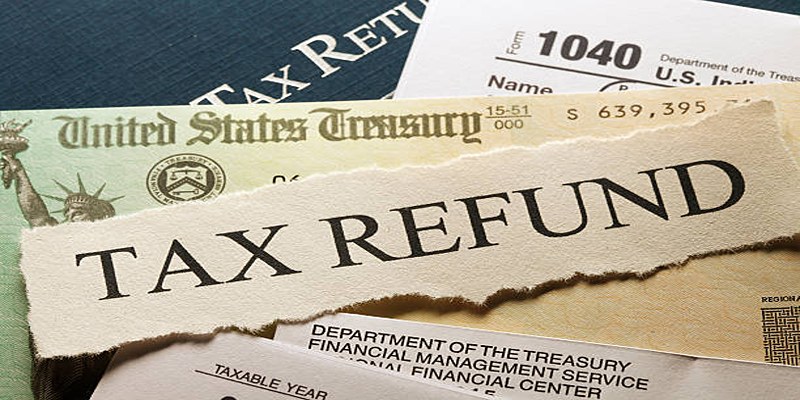Tax season often brings stress with complicated forms, high software fees, or expensive tax professionals. The IRS’s new free tax prep software pilot aims to simplify filing while saving taxpayers money. But will it truly make taxes easier or add more confusion? Here’s a closer look at the program, its benefits, and how it stacks up against existing tax filing options.
What is the IRS Free Tax Prep Software?

The IRS Free Tax Prep Software is a new digital platform aimed at making tax filing more accessible for U.S. taxpayers. Announced as a pilot program, this initiative offers certain citizens the opportunity to file their taxes online at no cost. The platform is designed to handle various levels of tax complexity and is part of the IRS's broader modernization efforts under the Inflation Reduction Act.
This project comes as taxpayers have grown increasingly frustrated with traditional tax preparation options that often come with hidden fees, upsells, and a steep learning curve. The new free tool is intended to be straightforward and geared toward reducing the financial and mental burden of tax filing.
Key Features of the IRS Free Tax Prep Software
The IRS's software promises a streamlined tax filing process. Here are some of its notable features:
- Completely Free Filing: Unlike many private tax software providers that charge for filing certain forms or state taxes, the IRS tool ensures zero costs for users.
- User-Friendly Interface: Built with taxpayers in mind, the IRS intends for the software to be intuitive, even if you have no prior experience filing your taxes.
- Support for Complex Tax Situations: Whether you're a gig worker, small business owner, or dealing with investments, the software is expected to accommodate more complex scenarios, unlike many free versions of commercial tools.
- Data Security: The platform will leverage government-grade data security protocols to protect sensitive information from breaches or misuse.
The Pros of the IRS Free Tax Prep Software
While the program is in its infancy, there are already some clear advantages for taxpayers.
1. Cost Savings
The average American household spends $140 annually on tax preparation software or services. For low- and middle-income families, this cost can be especially burdensome. The IRS's free platform eliminates these expenses, making tax filing more equitable for everyone.
2. Simplified Process
Many third-party platforms offer free services upfront only to hit users with charges for "premium" features or specific tax forms. The IRS tool’s transparent pricing (or lack thereof) eliminates this confusion, providing clarity and consistency throughout the tax process.
3. Bridging Government Services and Taxpayers
The IRS platform keeps taxpayers within the ecosystem of federal services, removing reliance on for-profit corporations. This centralization could simplify record-keeping, payment confirmations, and refunds.
4. Potential for Customization
Since the program is run by the IRS, it could integrate personalized tips and insights directly relevant to the filer’s tax data—for example, identifying specific deductions automatically.
The Challenges and Limitations
While the program presents exciting possibilities, there are hurdles that need to be addressed to reach its full potential.
1. Limited Rollout
The software is currently only available to a select group of filers during its pilot phase. This limited access means it may take years before it’s widely available to all taxpayers.
2. Learning Curve
Despite promises of a user-friendly interface, many citizens may be wary of switching to a new platform. Long-standing familiarity with commercial tools like TurboTax or H&R Block could make adoption slower.
3. Technical Challenges
The complexity of the tax code and the immense variability in tax situations create a high bar for software developers. Without a seamless experience, the platform risks discouraging users during its rollout.
4. Data Privacy Concerns
Although the IRS emphasizes data protection, some taxpayers may feel uneasy entrusting sensitive financial information directly to a government-run program.
How Does it Compare to Existing Options?

The free tax prep software landscape isn’t new, with private companies dominating the market for years. How does the IRS’s solution stack up against current options?
Third-Party Software (TurboTax, H&R Block)
While these tools are polished and robust, many versions are only partially free. Taxpayers with advanced needs often face unexpected costs when they discover that state filings or certain deductions and credits require upgrades.
- Advantage: Faster, more familiar interface with extensive user tutorials.
- Disadvantage: Potential for upsells and hidden fees.
Free File Alliance
Another existing alternative is the IRS Free File program, which partners with private companies. While useful for many, the program has faced criticism for lack of awareness and accessibility, as well as overly complicated conditions to qualify for free filing.
- Advantage: Access to free filing for eligible taxpayers earning below a certain income threshold.
- Disadvantage: Limited accessibility and confusing eligibility criteria.
The IRS Free Tax Prep Software, on the other hand, aims to provide a completely free and streamlined experience without conditions or third-party involvement. If executed well, it has the potential to level the playing field.
What This Means for Small Business Owners and Freelancers
For self-employed individuals and small business owners, the IRS program offers the promise of significant relief. Currently, these groups often face higher software costs due to complex filing requirements, such as Schedule C forms, business expense deductions, or 1099 reporting. By providing a comprehensive tool free of charge, the IRS solution may help these taxpayers save both time and money.
What's Next for Taxpayers?
The IRS Free Tax Prep Software has the potential to disrupt the tax preparation industry while making filing taxes more accessible and less stressful for millions of Americans. However, whether it will fully deliver on its promise depends on how effectively the pilot phase functions and whether taxpayer concerns are addressed.
It’s an exciting step toward modernization and equity in tax filing, but its success ultimately relies on feedback from users like you.
Conclusion
Curious about the IRS Free Tax Prep Software? Stay tuned as the program evolves and additional features are added. For now, if you want to stay ahead of the tax curve, ensure you’re educated on the best tools and strategies available. Research options, weigh the pros and cons, and choose a platform that saves you both time and money.












